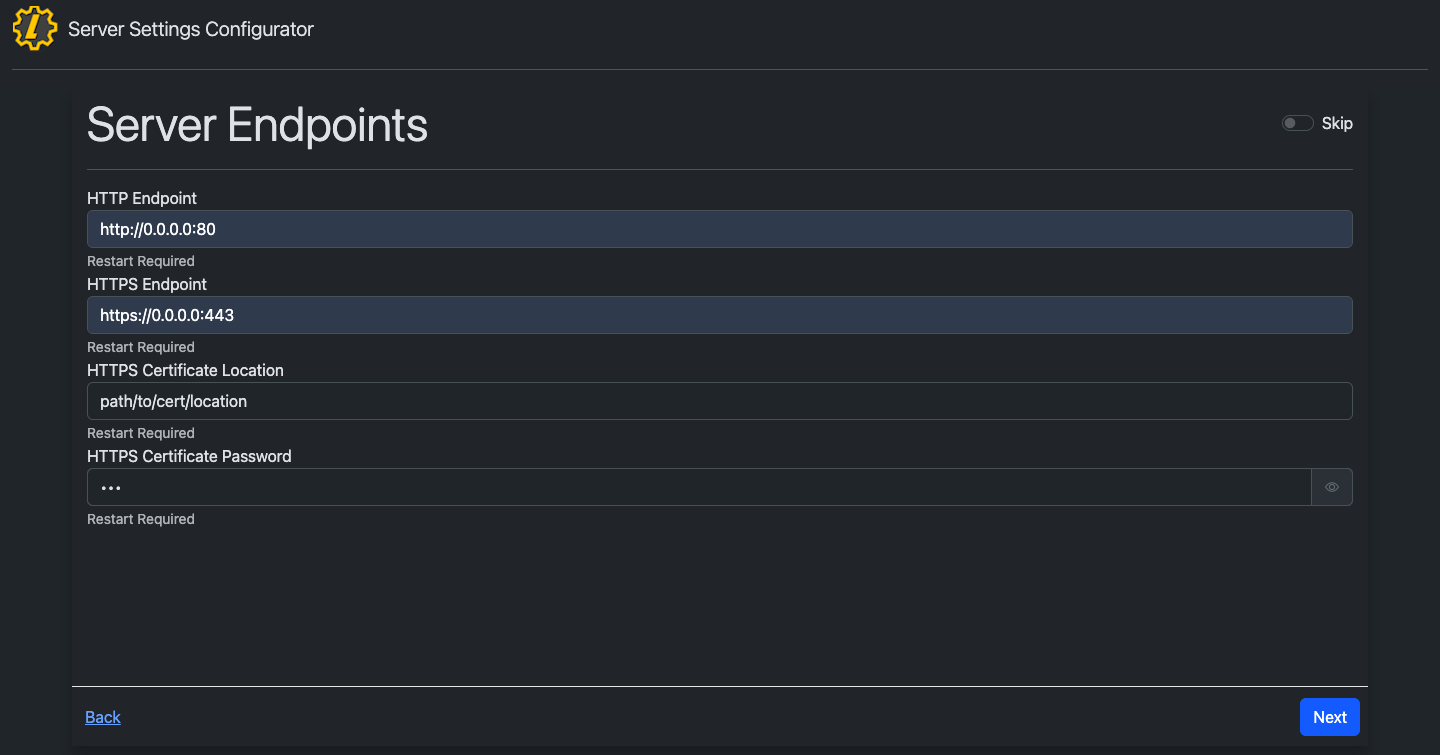Set Up HTTPS
LubeLogger runs on Kestrel, which is a cross-platform standalone web server provided by .NET
If you're running LubeLogger behind a reverse proxy(i.e. NGINX), then this walkthrough does not apply to you since the SSL certs will be served up by NGINX instead of Kestrel.
This article covers the step-by-step process to set up HTTPS for a LubeLogger instance.
Docker
If you're running LubeLogger on a Docker instance, first read this article by Microsoft
- Convert the .PEM / .CRT files into .PFX, read this StackOverflow post
- Open and modify the .env file and add the following lines(note that in this example I used bob as the password for the cert)
Note
You can use the LubeLogger Configurator for this step
ASPNETCORE_Kestrel__Certificates__Default__Password=bob ASPNETCORE_Kestrel__Certificates__Default__Path=/https/<yourPFXCertificateName>.pfx ASPNETCORE_URLS=https://+:443;http://+:80
- Open and modify docker-compose.yml. You will need to bind a new volume to the Docker container so that Kestrel can access the certificate file.
volumes:
- ./https/:/https:ro - Check the port bindings to ensure that traffic is being forwarded to port 443
ports:
- 443:443 - Run
docker-compose up -dto start up the container andhttps://localhostwill now have a valid cert.
Windows
If you're running LubeLogger as the standalone Windows executable:
- Convert the .PEM / .CRT files into .PFX, read this StackOverflow post
- Navigate to the Server Settings Configurator and click Next until you get to "Server Endpoints"

Note: Replace 0.0.0.0 with your IPv4 address
- Save the Settings by clicking to the end of the Server Settings Configurator and click "Save"
- Restart the app and
https://localhostwill now have a valid cert.
